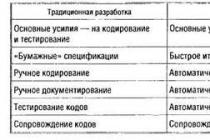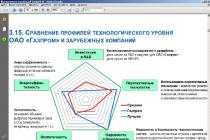All small enterprises, except micro, must report on key performance indicators.
However, submit any statistical reporting small businesses are required only if they are included in the sample. If the organization has not received a request from the statistical authorities, it is not necessary to submit the PM form.
When to take
The form is submitted once a quarter.
For the first quarter, you need to submit the PM form by April 29, for the first half of the year - by July 29, for 9 months - by October 29, for the year - by January 29.
Download the new PM form for free
Instructions for filling out the PM statistics form
Title page
The title page of the form includes standard data: name, address, organization codes. In this case, you should indicate the full name of the company according to the registration documents, and write in brackets short title. In the address bar, you need to reflect the full legal address and the actual address (if it differs from the legal one).
In columns 2 and 3 title page it is necessary to mark the OKPO and OKVED codes, respectively. Column 4 should be left blank.
All indicators in sections 1 and 2 are entered on an accrual basis.
First section
If the company applies the simplified tax system, you need to make a note in section 1.
Second section
The second section is filled out based on the number of employees and their salaries.
For each indicator, you need to make a mark, for this you should circle the corresponding word - “yes” or “no”.
The table includes indicators for the average headcount, wage fund and social benefits. Line 03 reflects the average number of employees. Line 03 is equal to the sum of lines 04, 05 and 06.
The accrued wage fund (FZP) by categories of employees is reflected in lines 07-11.
The PM Trade form is, in essence, a document that provides information about the trade turnover of a small business. Such paper should be submitted to Rosstat at the place of registration of the enterprise.
The main list of those who are required to provide such a document to the authorities includes all representatives of small businesses that are engaged in retail trade. Before issuing a report, it is worth clarifying the full list of enterprises that are installed in the territorial region of Rosstat.
Dear readers! The article talks about typical ways to solve legal issues, but each case is individual. If you want to know how solve exactly your problem- contact a consultant:
It's fast and FOR FREE!
Since this report is required to be compiled and submitted to Rosstat on a monthly basis, many entrepreneurs should study the features of the form and the rules for filling it out. After all, failure to meet the deadlines for the delivery of such documents can result in fines from the relevant authorities.
Design instructions
Form PM-bargaining is intended for the reporting of legal entities that belong to the field of small business. At the same time, they must be engaged in retail trade. This may include not only food, clothing, but also the sale of motor vehicles and motor vehicles. However, it is worth considering that it is impossible to include here those involved in the repair Vehicle and household appliances.
IN this species Forms should include information about the legal entity. After filling out, the paper is betrayed to Rosstat.
The form should be filled with data according to the following structure:
- Company name. It is filled out in full. The official abbreviated name can be written in brackets.
- Location must be specified legal registration enterprise, and if it does not match the actual location, then you need to specify the second address.
- Line 01 contains data on the turnover of retail trade.
- The second column should reflect information on what is the turnover on food products. This includes drinks and tobacco products.
- In the line with the digital designation 04, information is entered on the turnover of goods that were sold using the electronic commerce system.
- In the next line, the amounts for which they were sold by mail are entered.
- Well, in the sixth line, a turnover is introduced wholesale trade that were previously purchased for the purpose of resale as legal entities, and subjects represented by an individual entrepreneur.
- Line 07 is used to enter the remaining quantity of goods to be resold.
- And in the column following it, the number of remnants of goods that will be revalued at an average cost for sale to the public is put down.
- 09 is a line for entering the average number of employees of the company for last year. These data include the number of employees, external part-time workers, as well as those persons who performed work under contract agreements. It should be filled out once a year, generating a report for February.
Who submits statistics
The quarterly form PM Torg should be submitted to local statistical authorities based on the results of the quarter. The deadline is quite long and reaches the end of the month following the reporting quarter. Moreover, the obligation to submit such a report is assumed for enterprises that have the status of small enterprises or are in the Rosstat sample.
The class of small enterprises may include firms with more than 100 employees, but not less than 15. Or their annual revenue should be in the range of 120 million rubles - 800 million rubles. A firm ceases to be a small business entity when its performance is at the level described above for three consecutive years.
Rosstat takes data on small businesses as part of quarterly observations through the formation of representative samples of enterprises. Lists of those firms that submit reports are usually posted on the department's website.
The main content of the order
The FSGS order states general information about filling out the PM-bidding form and where it must be submitted after filling it out. It is indicated that those business entities that conduct wholesale trade in 2019 should submit such a form.
Small businesses that operate on a "simplified" basis can provide statistical reporting in accordance with the current procedure. But information is transferred by legal entity, which means that all branches and separate divisions of this legal entity should be indicated in any location.
A legal entity enters information into the PM Torg form and submits it to Rosstat at its location. If the legal entity does not conduct any activity at the location, then the form is sent to the place where the activity is actually carried out.
At the same time, the head of the company can appoint responsible persons who can generate statistical reports and provide them by proxy. If the company is a subsidiary or dependent economic association, then they provide the PM with bargaining on a common basis. And if the main company, which also has subsidiaries, generates such a report, it does not enter information on separate branches into it.
But in case trust management enterprise, reports on it are compiled and transmitted by the managing organizations themselves. The form indicates the name of the organization, exactly with the constituent documents, as well as mailing address- physical and legal. Two addresses are indicated if they do not match, and an updated version of the location must be indicated when filling out.
In the code part, the OKPO code is inserted, which is taken from the classifier, and then the turnover values \u200b\u200bthat a particular company has for the reporting period are entered. If the activity is to transport gas or electricity to the public, as well as retail, such activity does not fit into the form.
The main sign that a small business wholesale trade is taking place can be an invoice that is provided when the goods are shipped. On top of that, the report indicates not only the turnover indicated at the sale price, but also the list number of employees, except for those who were hired part-time from other companies or under a contract.
The procedure for filling out the form PM Torg
For those who have recently started entrepreneurial activity, there is a problem with how to fill out the document. First, a line is filled in with the name of the organization that generates the report. Moreover, the name is indicated first in full as it is entered in the constituent documents, and only then the abbreviated name is entered in brackets. Next, you should indicate not only the name of the subject of the Russian Federation, that is, the city, town, village, but also the legal address with a mandatory postal code.
OKPO is entered in the line for the code, which should be taken from the state statistics authorities themselves. Usually such a number is issued at the time of registration. Further, information is put on all divisions, branches, and not just on the main place. This does not include only branches from other subjects of the country, that is, other republics, territories or regional territories.
Those units that are located on the territory of other subjects of the Russian Federation are required to provide data on location. And if the unit itself cannot fill out the form, then it requests data from the parent organization, which then sends the generated report to the branch of another entity.
Legal entities submit reports at the place of state registration, but if the company does not operate at the place of registration, then the form is submitted at the place of actual activity.
The rows indicate the turnover of retail trade, and a breakdown is made into categories of goods that were sold to the public not only with the help of personal selling but also through the Internet, mail and other channels.
At the same time, goods that turned out to be overdue are not entered into the form, and goods in the form of tickets, coupons and payment for communication services are not included here, including data on wholesale sales. For businesses Catering there is a separate line, where not only the volume of the sold cooking is entered, but also its selling price.
The form also indicates the number of residual goods and stocks that are planned to be sold to the public, their sale value is also indicated. To complete Section 2, you must be in retail business. At the same time, in the case of the sale of alcohol, information on the quantity of products sold is expressed in decalitres, and the stocks of drinks are formed based on all storage locations.
When filling out this form, instructions will be useful to avoid mistakes. The first line shows the retail turnover, which shows the proceeds received from the sale of consumer goods or household goods to the population.
Moreover, goods sold under contracts of commission, full value, on credit and by mail, as well as through vending machines and on privilege. That is, this line somehow indicates any product that was sold by the organization.
Row two separates information on the level of turnover of trade in food products. products, including including drinks and products containing tobacco.
Line 03 indicates information on the wholesale turnover of the organization, which indicates the proceeds received from the resale of goods to entrepreneurs and legal entities. Moreover, the sale of gas and electricity, lottery tickets and payment cards for communication services does not appear here.
Next, the line indicates the balance of goods that are planned to be sold according to the wholesale scheme, and line 05 indicates the stocks that are planned to be sold to the population at retail. Moreover, the sale price is also indicated, which is formed on the basis of average price sale of such goods, trade margin, VAT and other additives.
Line 06 indicates the average number of employees for the past year, it is filled in the report provided in March for the entire past year. This does not include employees who are not in the state, as well as those who were involved in work under a contract or worked part-time.
The average number for the year can be calculated by taking the average number of workers for each of the months of the year and dividing them by 12. Freelance and contract workers are entered separately, as well as their average monthly and annual number in the enterprise.
A report in the form of PM-trading is submitted to the statistical authorities. Based on this, statistics are generated on the number of employed people, sales volumes and prices for goods and services. Moreover, in case of failure to provide, the organization may face a fine for violations of the reporting procedure.
APPLICATIONS AND CALLS ARE ACCEPTED 24/7 and 7 days a week.
Form PM-bargaining Information on the turnover of trade of a small enterprise is submitted to territorial authority Rosstat all legal entities ( commercial organizations, organizations of consumer cooperation), which are subjects of small business (with the exception of micro-enterprises). The main activity of legal entities providing this report is retail(including trade in motor vehicles, motorcycles, their components and accessories, motor fuel, except for repairs vehicles, motorcycles, household products and items for personal use), according to the list established by the territorial bodies of Rosstat. The statistical report must be submitted monthly.
The form includes information about the legal entity as a whole.
The completed form is submitted to the territorial bodies of Rosstat at the location of the legal entity. In the case when a legal entity does not carry out activities at its location, the form is provided at the place of actual implementation of its activities.
The head of the legal entity appoints officials authorized to provide statistical information on behalf of a legal entity.
In the case of carrying out activities on the basis of a simple partnership agreement (agreement on joint activities) the cost of goods sold by the partners as a result of their joint activities, when each of the partners fill out Form N PM-bargaining, is distributed among the partners in proportion to the value of their contributions to the common cause, unless otherwise provided by a simple partnership agreement or other agreement of the partners. If the cost of these goods cannot be distributed among the comrades, then information on them is shown on a separate form of the federal statistical observation a partner who is entrusted with keeping records of common property.
In the address part of the form, the full name of the reporting organization is indicated in accordance with the constituent documents registered in the prescribed manner, and then in brackets - the short name.
The line "Postal address" indicates the name of the subject Russian Federation, legal address with postal code; if the actual address does not match the legal one, then the actual postal address is also indicated.
In the code part by a legal entity in without fail the code is affixed of the All-Russian classifier enterprises and organizations (OKPO) on the basis of the Notification of the assignment of the OKPO code sent (issued) to organizations by the territorial bodies of Rosstat.
How to fill out the form
Line 01 shows the retail trade turnover, which is the proceeds from the sale of goods to the public for personal consumption or use in household for cash or paid by credit cards, by settlement checks of banks, by transfers from depositors' accounts, by order individuals without opening an account, through payment cards, which is also counted as a sale for cash.
Retail turnover also includes:
- the cost of goods sold under commission agreements (orders or agency agreements) at the time of sale in the amount of the full cost of goods, including remuneration;
- the cost of goods sent to buyers by mail, with payment by bank transfer (at the time of delivery of the parcel to the post office);
- the full cost of goods sold on credit (at the moment the goods are released to buyers);
- the cost of durable goods sold by samples (at the time of issuing an invoice or delivery to the buyer, regardless of the time the buyer actually pays for the goods);
- the cost of goods sold through teleshopping and computer networks (electronic commerce, including the Internet) at the time of issuing an invoice or delivery to the buyer, regardless of the time of actual payment for the goods by the buyer;
- the cost of goods sold through vending machines;
- total cost medicines released certain categories citizens free of charge or on preferential prescriptions;
- the full cost of goods sold to certain categories of the population at a discount (coal, bottled gas, wood fuel, etc.);
- subscription price printed publications(at the time of issuing the invoice, excluding delivery costs);
- the cost of a package that has a selling price that is not included in the price of the goods;
- the value of empty containers sold.
- Not included in retail trade turnover:
- the cost of goods issued to its employees on account of wages;
- the value of real estate;
- the cost of goods sold that did not survive the warranty periods of service;
- the cost of travel tickets, coupons for all types of transport, lottery tickets, telephone cards, express payment cards for communication services;
- the cost of goods sold through retail trading network legal entities (including organizations social sphere, special consumers, etc.) and individual entrepreneurs.
Organizations (commission agents, attorneys, agents) carrying out activities in the interests of another person under commission agreements, commission agreements or agency agreements, reflect the cost of goods sold to the public in line 01 in full. Principals, trustees, principals who are the owners of these goods do not fill in line 01.
Retail trade turnover data is filled in by both retail trade organizations and wholesale trade organizations if they sell goods to the public.
The turnover of public catering is not included in the turnover of retail trade.
A sign of a transaction related to retail trade is the presence of a cash receipt (account) or other document replacing a check. Retail turnover is shown at actual sales prices, including sales margin, value added tax and similar obligatory payments.
In line 02, data on the turnover of retail trade in food products, including drinks, and tobacco products are allocated.
Line 03 shows the turnover of wholesale trade, which is the proceeds from the sale of goods previously purchased on the side for the purpose of resale, to legal entities and individual entrepreneurs for professional use(processing or further sale).
Commission agents (attorneys, agents) operating in wholesale trade in the interests of another person (committent, principal, principal) under commission (order) agreements or agency agreements, in line 03 reflect only the amount of remuneration received. The cost of goods sold on the basis of commission agreements, commission agreements or agency agreements is reflected by the committents (principals, principals).
Transportation and distribution of gas through gas distribution networks among end consumers (population, enterprises, etc.), as well as distribution (output) of electric and heat energy in line 03 are not shown, since their sale to the end consumer (i.e. organizations using them in the manufacture of products or for domestic purposes) is not a wholesale sale.
The sale of goods to the population refers to the retail trade turnover and is not reflected in line 03, but is shown in lines 01 and 02.
The cost of lottery tickets, telephone cards, express payment cards for communication services is not included in the wholesale trade turnover. The cost of sold real estate in line 03 is also not reflected.
An obligatory sign of a transaction related to wholesale trade is the presence of an invoice for the shipment of goods.
Data on the turnover of wholesale trade is filled in by both wholesale trade organizations and retail trade organizations if they resell goods previously purchased on the side to legal entities or individual entrepreneurs.
Wholesale trade turnover is given in actual sales prices, including trade margin, value added tax, excise tax, export duty, customs duties and similar obligatory payments. The amount of remuneration of commission agents (attorneys, agents) is reflected at the actual cost, including VAT.
Line 04 shows the balance of goods purchased on the side and intended for resale. Line 05 highlights the balances of goods for sale to the public, which must be revalued at the average selling prices for similar goods in force in the reporting month, including value added tax and similar obligatory payments. Data on the balance of goods intended for sale to legal entities and individual entrepreneurs are recorded at purchase prices.
Data on the balance of goods is given for all storage places (in warehouses, refrigerated warehouses, storage facilities, stores, etc.), including rented ones. Lines 04 and 05 also reflect the balance of goods transferred by the reporting organization for safekeeping. Remains of goods belonging to other organizations and accepted for safekeeping or located on leased areas are not shown in lines 04 and 05.
Organizations (commission agents, attorneys, agents) carrying out activities in trade in the interests of another person under commission agreements, commission agreements or agency agreements do not fill in lines 04 and 05. The balances of goods in lines 04 and 05 reflect the owners of these goods - organizations that are commitents, principals, principals.
Lines 01 - 05 are given with one decimal place after the decimal point.
The "Reference" section is filled out only by a legal entity as a whole for all its divisions, including branches located on the territory of other constituent entities of the Russian Federation (republics, territories, regions).
Line 06 provides information on the average number of employees of the organization for the previous reporting year, which includes the average payroll employees, the average number of external part-time workers and the average number of employees who performed work under civil law contracts.
The average number of employees (without external part-timers) for the reporting year is determined by summing up average headcount employees for all months of the reporting year and dividing the amount received by 12.
The average number of employees per month is calculated by summing the number of employees on the payroll for each calendar day of the month and dividing the amount received by the number calendar days month, for a weekend or a holiday, the number of employees for the previous working day is taken. The list of employees includes employees who worked on employment contract and performing permanent, temporary or seasonal work for one day or more, both actually working and absent from work for any reason (due to a business trip, illness, annual, additional, study leave, unpaid leave, etc.). ), as well as working owners of organizations who received wages in this organization.
When calculating the average number of employees, women who were on maternity leave and during additional holidays for child care.
Employees hired part-time work time, are taken into account in the average number in proportion to the hours worked.
The average number of employees performing work under civil law contracts is calculated according to the methodology for determining the average headcount. These employees are accounted for each calendar day as whole units during the entire period of this contract, regardless of the period of payment of remuneration. For the reporting year is determined by summing the average number of these employees for all months of the reporting year and dividing the resulting amount by 12.
Line 07 shows the presence of stores and pavilions, owned (not leased) and rented, as of January 1 of the reporting year, and line 08 shows the area of their trading floor.
Stores include specially equipped stationary buildings or parts of buildings intended for the sale of goods and the provision of services to customers and provided with a trading floor, auxiliary administrative and amenity premises, as well as premises for receiving, storing goods and preparing them for sale.
Pavilions include equipped buildings with a trading floor and premises for storing inventory, designed for one or more workplaces of the seller.
Line 08 indicates the area of the trading floor of shops (pavilions). It includes the installation area (the area of the trading floor occupied by equipment intended for displaying, demonstrating goods, carrying out cash settlements and servicing customers), the area of cash registers and cash booths, the area of workplaces service personnel, as well as the area of passages for buyers. The area of the trading floor is not included in the area of premises for receiving, storing and preparing goods for sale, the area of utility and administrative premises.
Line 09 reflects the presence as of January 1 of the reporting year of own (without leased) and rented car dealerships, line 10 - the area of their trading floor.
Line 11 shows the availability of own (without leased) and rented tents and kiosks as of the end of the reporting year.
A tent (stall) is an easily erected collapsible structure, equipped with a counter, without a trading floor and premises for storing goods, designed for one or more seller's workplaces, on the area of which there is a commodity stock for one day of trading. Kiosk - a building equipped with commercial equipment, which does not have a trading floor and premises for storing goods, designed for one workplace seller, on whose area the inventory is stored.
The presence of pharmacy kiosks and points on line 11 is not shown, but is reflected on line 15.
Line 12 reflects the availability as of January 1 of the reporting year of own (without leased) and leased petrol stations(gas stations), including gas filling stations (AGS).
Line 13 shows the presence of own (without leased) and leased pharmacies and pharmacy stores as of January 1 of the reporting year, line 14 shows the area of their trading floor.
Line 15 shows the availability of own (without leased) and rented pharmacy kiosks and points as of January 1 of the reporting year.
If an enterprise leases a part of the common (trade) area owned by another legal entity or individual entrepreneur, and on this area carries out trading activity, then in lines 07, 08, 11 and 15 it is reflected as a separate commercial facility(shop, pavilion, point, etc.).
Lines 06 - 15 are completed once a year in the February report.
3-TORG (PM) - a form of federal statistical observation, which indicates information about the retail trade turnover of the enterprise (Appendix N 7 to the Order of Rosstat dated 04.08.2016 N 388). It is quarterly, filled in on an accrual basis and must be submitted by some organizations to the Rosstat authority no later than the 15th day of the month following the reporting period.
That is, 3 TORG PM in 2017 must be passed:
- for January-March - no later than 04/17/2017;
- for January-June - no later than July 17, 2017;
- for January-September - no later than 10/16/2017.
3-TORG (PM): who rents
Form 3 TORG PM must be submitted by legal entities - small businesses (except micro-enterprises), the main activity of which is retail trade, and included in the sample (paragraph 1 of the Instructions for filling out the form, approved by Order of Rosstat dated 04.08.2016 N 388 (hereinafter - Instructions), section 2.2 of the Appendix to the Order of Rosstat dated 06/24/2016 N 301). Many territorial branches of Rosstat have posted lists of small enterprises that fell under the sample survey on their websites on the Internet. So did Mosgorstat, Novosibirskstat, Irkutskstat. By the way, not so many lucky people got into the sample. For example, in Moscow there were about 230 such companies.
Form 3 TORG PM 2017 must be submitted to the state statistics authority at the location of the enterprise. And if the company operates in another place, then - at the place of actual conduct of its activities (clause 2 of the Instructions).
3 TORG PM: instructions for filling out
How to fill out 3 TORG PM? Let's start with the title page. It is filled in general rules. Here it is necessary to indicate (clause 5 of the Instructions):
- the full name of the organization and a short name in brackets next to it;
- address. If the legal address does not match the actual address, then the actual one is indicated;
- OKPO code.
Section 1 shows the summary data on retail trade turnover for the reporting period, as well as for the same period of the previous year, which provides a visual comparison of indicators. Retail trade turnover is defined as proceeds from the sale of goods to the population for personal consumption, regardless of the method of payment. At the same time, the total cost of goods is included in the turnover, even if they were sold at a discount, on credit, at reduced prices (as in the case of the sale of medicines by pharmacies to certain categories of the population). The cost of goods is taken into account at sales prices, which include the trade margin and mandatory payments, such as VAT.
The cost of goods sold to legal entities and individual entrepreneurs, as well as the turnover of the catering sector in retail trade turnover are not taken into account (clause 6 of the Instructions).
Separately, section 1 reflects information on the cost of goods sold through online stores, as well as those sold by mail - according to catalogs, samples, etc. (clause 7.8 of the Instructions).
Also in section 1, information on the stocks of goods already purchased and intended for sale to the public should be indicated. At the same time, in accordance with the procedure for filling out 3 TORG PM, the inventory value should be assessed based on the average selling prices for similar goods in the reporting period and the corresponding period of the previous year (
Small business enterprises in the trade sector are required to submit reports in the form 3-TORG (PM) to the territorial body of Rosstat at the end of each quarter. Filling out this form in all details reveals our article.
What to be guided by
The current 3-TORG (PM) form has been approved along with some other statistical forms by order of Rosstat No. 388 dated August 04, 2016 (Appendix No. 7). The same document contains mandatory instructions for filling out 3-TORG (PM).
You can download the 3-TORG (PM) form for free to fill out at the following direct link:
Rules: how to fill out 3-TORG (PM)
First, a general approach, how to fill out the 3-TORG (PM) form. Do this:
- on a cumulative basis;
- in general for trading company taking into account the "isolation".
In addition, the procedure for filling out 3-TORG (PM) has some features depending on who exactly is involved retail sales(see table below).
| Features of filling 3-TORG (PM) | |
|---|---|
| Retail entity | Fill Features |
| Simple partnership (agreement on joint activities) | The cost of goods sold by comrades is distributed according to the value of their contributions to the common cause (each of them fills out the form). A different procedure may be prescribed by a partnership agreement or another agreement between them. If the cost of goods cannot be distributed among the partners, then the form for all is handed over by the partner who keeps records of the common property. |
| Legal entities - commission agents / attorneys / agents - in retail trade in the interests of another person under commission / commission / agency contracts | Show the actual cost of goods sold to the public |
| Commitents, principals, principals - owners of goods | Form 3-TORG (PM) is not filled out, since the relevant data is provided by a company (usually a commission agent) that directly sells goods to the public |
According to the procedure for filling out 3-TORG (PM) in 2017, this form must indicate the actual postal address if it does not match the legal one. And the OKPO code is taken from the notification of its assignment from local authority Rosstat.
Section 1

First of all, the procedure for filling out the 3-TORG (PM) form requires showing the retail trade turnover:
- for the quarter;
- for the same quarter last year.
We are talking about the proceeds from the sale of goods to the public for personal consumption or use at home for cash or paid in other ways.
So, retail turnover includes the full cost of:
- goods sold to the population on credit;
- drugs dispensed to certain categories of citizens free of charge or on preferential prescriptions;
- coal;
- gas in cylinders;
- wood fuel;
- other goods sold to certain categories of the population at a discount.
The retail turnover does not include the cost of goods sold through the retail trade network:
- legal entities (including social organizations, special consumers, etc.);
- businessmen.
A mandatory sign of a retail transaction is the presence of a cash receipt (invoice) or another document replacing the check.
The current rules for filling out 3-TORG (PM) indicate that the retail price includes:
- trade margin;
- similar obligatory payments.
For the purposes of line 03, Internet trading is the sale of goods on orders from buyers received online (on-line), where the price and / or terms of sale are accepted or negotiated over the Internet, e-mail, etc., regardless of the form calculation and method of delivery of goods.
The cost of goods sold through online stores is determined by the time the invoice is issued or delivered to the buyer. That is, the moment of actual payment for the goods by the buyer does not play a role.
Mail order (page 04) is the retail sale of any product through mail order. They are selected from advertisements, catalogues, samples or other forms of advertising.
Inventories of goods purchased from outside and intended for sale to the public (line "05") are valued at the average selling prices for similar goods that were valid in the reporting quarter and the corresponding quarter of the previous year. That is, on the balance sheet they are taken into account at the purchase price, and in line 05 - at average prices.
In addition, data on stocks of goods are given for all places of their storage, including rented ones:
- warehouses;
- refrigerated warehouses;
- in shops.
The volume of stocks does not include goods accepted from the population on commission.
Companies - commission agents, attorneys and agents when acting in the interests of another person do not fill out line 05. This is done for them by the owners of the goods - consignors, principals, principals.
Section 2




In the part of Section 2, filling in 3-TORG (PM) statistics implies a detailed decoding of the data in line 01 of Section 1.
| How to fill in individual lines | |
|---|---|
| line number | What to indicate |
| 06 | Fresh, chilled, frozen or canned animal meat, poultry Meat products and canned food game meat Offal from meat of animals, poultry, game |
| 07 | Beef, pork, veal, lamb, goat meat, horse meat, rabbit meat and other types of animal meat. Please note: sales and stocks of meat by-products are recorded only in line 06 |
| 08 | Meat of chickens, chickens, guinea fowls, geese, ducks, turkeys and other poultry. Please note: sales and stocks of poultry by-products are shown in line 06 |
| 09 | Meat and poultry products: · boiled, semi-smoked, hard-smoked and other sausage products; sausages and wieners; · smoked meat; Meat snacks semi-finished products (meat cutlets, meat and vegetable cutlets and with other fillings, dumplings, pancakes and meat pies, meatballs, minced meat, etc.); quick-frozen semi-finished products (with and without garnish); · culinary products meat, including own production; Meat bouillon cubes. |
| 11 | Live fish, chilled, frozen, salted, spicy salted, marinated, smoked, dried, dried, balyk products, caviar (weight and jar), crustaceans, molluscs and other seafood, canned fish in oil, tomato sauce, natural canned fish, fish and vegetable canned food, fish preserves from herring, sprat, mackerel and other types of fish and seafood. |
| 13 | Animals and vegetable oils, margarine products, mayonnaise, mayonnaise sauces. |
| 14 | Butter (salted, unsalted, Vologda, amateur, peasant, dietary, etc.), ghee, butter with fillers (cheese, chocolate, etc.). |
| 15 | Refined and unrefined vegetable oils: sunflower, peanut, mustard, soybean, corn, sesame, linseed, olive, rapeseed, salad, etc. |
| 16 | Margarine products (milk, cream, dairy-free margarine, confectionery and cooking oil) |
| 17 | Drinking milk, milk drinks without fillers and with fillers, fermented milk products and drinks (yogurt, fermented baked milk, kefir, curdled milk, koumiss, etc.), cream, sour cream, syrniki, etc.), cheeses, canned milk, dry freeze-dried canned milk, condensed and concentrated milk. |
| 18 | Whole draft drinking milk, pasteurized, sterilized |
| 19 | Milk drinks pasteurized, sterilized (reconstituted milk), made on the basis of dry whole cow's milk, without fillers |
| 23 | Sugar, powdered sugar, xylitol, sorbitol, other sweeteners |
| 24 | Flour and sugar confectionery |
| 25 | Tea, coffee, cocoa, as well as herbal teas, children's, coffee drinks, capsules for coffee machines, chicory (with and without additives), tea and coffee Gift Baskets(with cups, spoons, sweets, etc.) |
| 28 | Flour, concentrates of flour products for the preparation of cakes, pastries, muffins, cookies, buns, pies, dumplings and other flour dishes, as well as baby flour mixtures |
| 29 | Cereals, as well as cereals for baby food, baby food mixtures on cereal broths |
| 31 | Bakery products (bread of all kinds, bakery, lamb products, pies, pies, donuts, etc.), as well as crackers, croutons, crispbread |
| 35 | Alcoholic drinks, including beer and beer drinks |
| 36 | Vegetable and fruit juices, mineral water, bottled drinking water and other soft drinks |
| 38 | Chewing gum, food additives, dietary supplements, spices, spices and others food products, not included in other lines |
| 40 | Cosmetics and perfumery products, except soap |
| 42 | Refrigerators and freezers, dishwashers, household washing machines and dryers, household cooking and heating equipment, sewing machines, vacuum cleaners and other electrical household appliances |
| 45 | Audio equipment, televisions, VCRs, camcorders, home theaters |
| 46 | Audio equipment, which includes tape recorders, radio tape recorders, decks, music centers, players, radio receivers, tuners, amplifiers, equalizers, speakers, voice recorders, car audio equipment, players with a laser optical reading system for CDs, record players. |
| 47 | Plasma, projection, kinescope TVs, LCD TVs, etc. |
| 49 | Ski equipment, equipment for water sports, equipment and equipment for physical education, athletics, other sports or outdoor games, special sports shoes (ski boots, football boots, boots with attached skates, etc.). Please note that sales and stocks of sportswear and footwear such as sneakers are not included in this line. |
| 50 | Complete computers, including tablets (iPad), laptops, netbooks |
| 51 | Monitors, printers, acoustic systems, mice, keyboards, touchpads, touch screens, microphones, scanners, webcams, video capture devices, TV tuners, devices that store information processed by a computer (HDD, HDD, USB - flash - storage device). |
| 52 | Cameras, lenses, flashes, memory cards, tripods, light filters, digital photo frames, batteries, chargers, film, etc. |
| 53 | Mobile phones, including iPhone, smartphones |
| 54 | Bicycles and motorbikes, including children's bicycles |
| 55 | Books |
| 60 | Men's, women's and children's coats, short coats, raincoats, jackets, overalls, suits, jackets, jackets, trousers, dresses, skirts, blouses, vests, trouser sets and other outerwear, including outer jersey. Please note: this line does not reflect sales and stocks of sportswear, leather clothing. They are shown on line 82. |
| 61 | Underwear: briefs, pantaloons, underpants, nightgowns, pajamas, bathing and housecoats, combinations, petticoats, peignoirs, T-shirts, jerseys and other underwear, including knitwear. |
| 64 | Men's, women's and children's shoes of any material and for various purposes, except for special sports shoes (ski boots, football boots, boots with attached skates, rollers, etc.) |
| 65 | Timber, brick, cement, crushed stone, gravel, sand, lime, gypsum, concrete mixtures, ceramic well pipes, tiles, mastic, putty and ground compounds, and other building materials. Please note: this line does not reflect the sale and stocks of hardware, paints and varnishes, hand tools, construction accessories, gardening equipment and inventory, metal and non-metal building structures, prefabricated wooden houses. They are shown on line 82. Line 65 = 47.52.71 + 47.52.72 + 47.52.79 |
| 67 | Products used in medical purposes, orthopedic products, except for medical equipment. Please note: information on medical technology is shown on line 82. Line 67 = 47.74.10.000 + 47.74.20.000 |
| 69 | Jewelry from precious metals and stones |
| 70 – 74 | Various types of motor fuel through gas stations (including MTZS, CNG filling station, AGZS, CryoGZS). According to columns 6 and 7 - stocks of motor fuel intended for retail trade. Please note: they do not reflect the sale of motor fuel to legal entities, the volume of gas sold for filling gas cylinders. |
| 76 | Tires and other auto parts, assemblies and accessories, both new and used, except car radios |
| 77 | Motorcycles, scooters, ATVs, snowmobiles, mopeds, both new and used |
| 82 | Non-food products not included in other lines (souvenirs, handicrafts, cult and religious items, funeral accessories, pets, bark for animals, birds, fish, feed, feed mixtures, flowers and other plants, seeds, fertilizers, liquid boiler fuel, bottled gas, wood fuel, etc. e). |














